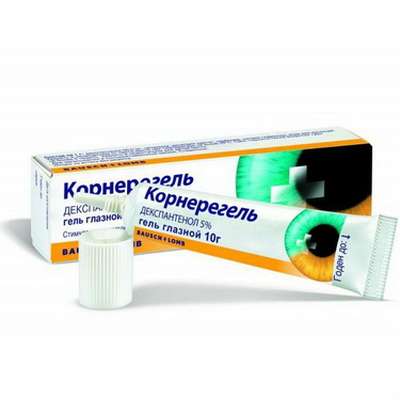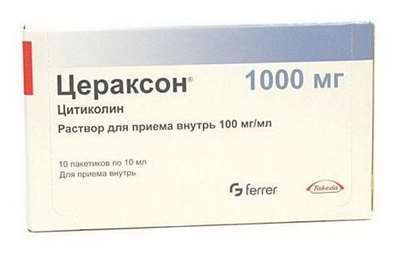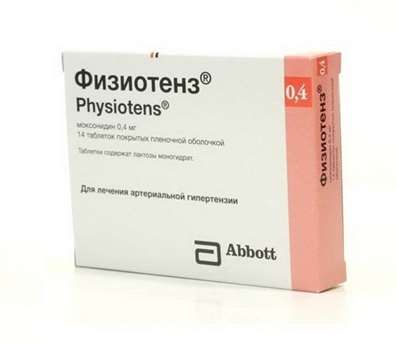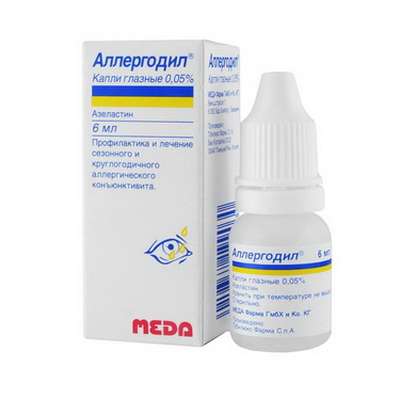Doping control
17 Oct 2016
Around the middle of the 50s of the twentieth century have been widely used stimulants in sport. On the one hand, the results sharply went up the hill, on the other - have been recorded dozens of cases where athletes who use doping, died in the training.
That is why in 1967 a medical commission on doping issues has been created by the International Olympic Committee. It was headed by the Belgian throne, Crown Prince Alexandre de Merode. The Commission has developed a list of prohibited drugs. It includes two groups: central nervous system stimulants and drugs. In London, and then in Germany, created an anti-doping laboratory.
The first doping - tests at the Olympic Games were held in Mexico City -1968, and then revealed only a single offending athlete. But already at the next Olympic Games - Munich -1972 in the use of banned drugs have been convicted of seven athletes. And in the 80s of the last century there was a whole series of major doping scandals.
At the Pan American Games in Venezuela test, conducted by a group of doctors from Germany without prior warning, I found 19 athletes who used illegal drugs. More about the same abandon the test, and to participate in competitions.
Juan Antonio Samaranch, the now former president of the IOC, once mentioned that the most terrible day in the history of the modern Olympic movement was the disqualification of world record holder in the women's 100-meter Ben Johnson. "Another similar case, and the Olympic movement will be possible to put an end" - Samaranch said.
At the Games in Seoul in 1988, in a sample of Johnson found traces of Stanozolol - preparation group of anabolic steroids. This happened after he ran a race with a fantastic time - 9.79 seconds.
As it turned out, for many years Johnson took Stanozolol and was never caught. But it formally. In fact, that it takes a drug, it was known long before the Seoul Olympics.
The fact is that to the Moscow Games of 1980, the Soviet government has acquired cutting-edge equipment for anti-doping center. It was one of the best in the world. Largely because of this Soviet specialists-five years later, we were able to reproduce the technique had the equipment of the Czech professor Berndzhiha Hundely, allows to detect traces of Stanozolol.
However, the official did not report about it. And in 1986 in Moscow were the first in the history of the Goodwill Games. He ran there and Johnson. Race it, of course, won, and sincerely believing that no single laboratory in the world will determine his fascination with Anabolics, went to take the test. But Johnson's trial, and then another dozen athletes were identified traces of anabolic steroids. But none of them was hurt. Soviet authorities decided not to spoil the holiday, and the names of the violators were not made public. Johnson left with a medal and then another twelve times successfully handed over doping - tests have not yet caught in Seoul.
It is noteworthy that the accreditation of the Korean Anti-Doping Center in Moscow was carried out professionals who have set up and the local equipment to detect Stanozolol. But if Ben Johnson back in 1986, said that he is not all right, he would take immediate steps and maybe still would be considered the greatest of the great.
The rapid development of the history of doping control can be determined 1988, immediately after the noisy scandals of doping at the Olympic Games in Seoul. IOC Vice-President and also Chairman of the IOC Medical Commission, Prince Alexandre de Merode announced the creation of a working group of the permanent World Anti-Doping Conference, whose main objectives were the development and adoption of the Anti-Doping Olympic Charter as a conceptual document that lays the common foundations of doping - control of athletes participating in competitions Olympic sports at the national and international levels.
In 1993, at the plenary session of the 3rd World Anti-Doping Conference such a document has been accepted and approved by all NOCs (including OCD). Among the key provisions of this document are contained:
- definition of "doping in sport" and the list of doping;
- unification of rules Testing athletes for doping;
- rules of international accreditation of doping control laboratories (ADC);
- unification of the system of sanctions against violators of the Charter;
- model of construction of the national anti-doping program.
In the following years under the auspices of the IOC Medical Commission have been significant efforts on the practical implementation and introduction of the main provisions of the Charter of the various international and national government (public administration activities) and community (federations by kinds of sports) organizations in the field of sports and physical culture. In some countries (France, Italy, Canada and some others) have passed the relevant legislation to combat doping, as well as developed national anti-doping programs (Norway, Finland, China, and others.).
However, due to some objective and subjective reasons for the adoption of the Anti-Doping Olympic Charter does not solve the main problem posed in this document, namely globalization and unification of the entire anti-doping control in sport at all levels.
The next step in the process of globalization and unification of anti-doping in sport has been the adoption of the "European Union Convention on the prevention of doping in sport," the European Community (1995). For several years, acceded to the Convention by all EU states, as well as a number of countries who were not at that time in the organization (including Russia).
In order to coordinate practical steps to establish and implement the provisions of this document at the national level in various countries of the EU Council of Ministers in Strasbourg it was set up monitoring group on the implementation of the Convention. However, a number of reasons did not allow us to consider this step as a basis for common and joint action by all States to limit and prevent the spread of doping in sport.
Firstly, it is the regional (continental) level of dissemination of the Convention, and secondly, the separation of the States that have adopted the document as the basis of its anti-doping policy of the state, in relation to the EU membership. In addition, a very difficult task was the unification of national legislation states - members of the EU and non-member countries in an international association.
Given the difficulties and obstacles faced by the world anti-doping movement in 1999 in Lausanne, the IOC has organized and held a World Anti-Doping Conference. The main result of the forum was the creation of the World Anti-Doping Agency (World Antidoping Agency - WADA) as an independent body to ensure that the globalization of its activities and unification of ADK in the sport at all levels.
Each country has its own anti-doping service that the form may differ significantly from similar foreign organizations. At the same time there is a certain set of principles which need to comply with all participants in the process. It is called the Code of WADA (World Anti-Doping Agency).
The WADA principles themselves can be as much, and not so hard. For example, the list of prohibited items and terms of disqualification are the same for everyone. Much more can be creatively different.
In 2007, the agency headed by an Australian lawyer John Fahey. Prior to that, the rules of the organization, its founder, the Canadian Dick Pound. That Pound insisted that WADA headquarters is located in Montreal. Question transport it to Europe rises now quite common, since most of the countries contributing annually to the WADA budget (the maximum contribution - 500 thousand euros (including Russia)), is in Europe.
Apparatus WADA has no more than 40 people. Collectors of doping - in the number of samples not included. In the world there are two independent firms whose people professionally engaged in the collection of samples on a global scale, - IDTM and ADC. Both are certified, that they make orders International Federations and WADA. Agents collect samples in the field and carry about them in the laboratories, which will point customers.
It should be noted that a very large part of WADA's activities comprise educational programs. Agency staff are confident that important to educate athletes than to punish them.
Currently it sets up the World Anti-Doping Code, the same for all the subjects of the sports movement, which, after discussion and amendment of the three successive versions of a document in February 2003 in Copenhagen, it was approved by the authorized representatives of the overwhelming majority of states (including Russia) .
The revised World Anti-Doping Code was adopted by the World Anti-Doping Agency founders of November 17, 2007. The revised World Anti-Doping Code came into force on 1 January 2009.
In accordance with the WADA Code and the International Convention against Doping in Sport, adopted by the General Conference of the United Nations Educational, Scientific and Cultural October 19, 2005 and ratified by the Russian Federation of December 26, 2006, in January 2008, in the Russian Federation on the initiative Federal agency for physical culture and sport set up an independent National Anti-Doping Organization RUSADA.
RUSADA main objectives is to protect the rights of athletes to compete free from doping, health promotion, justice and equality for all athletes.
Tasks RUSADA:
- Development of national anti-doping rules,
- collaboration with WADA and the national anti-doping organizations of other countries, the organization of the work of collecting doping group - samples
- training, certification and re-certification of officers doping - control,
- organization of activities of the Committee for Therapeutic Use Exemptions,
- organization of activities of Hearings and Appeals Committee
- Informing all-Russian sports federations (unions, associations) the adverse results of the analysis of samples,
- planning and implementation of educational, scientific and other anti-doping programs aimed at combating the use of performance-enhancing drugs in sport.
According to statistics, the situation with the use of prohibited substances and methods in Russian sport corresponds to the average for other developed countries, sports.
In Russia, a lot is being done in the organization of the anti-doping system. The budget laid Rossport enough funds to promote sports and cleanliness, prevention of doping.
Doping control is carried out in all kinds of sports. It is mandatory to test the first four members of the final classification, and others - by drawing lots. After the competition the athlete is awarded a notice of doping - control services escort doping - control, that from this moment keeps it under review and accompanies him (her) not later than one hour after the competition in the waiting room, where personal identification is made.
Things athlete may also be inspected if there is a suspicion that the possible manipulation of the bioassay. The athlete must choose the capacity of 75 ml for sampling and urinate in the bottle 2/3 A and 1/3 of the bottle B. After this sealed container, and the remaining urine is destroyed. The representative of doping - control measures immediately pH (it should be at least 5 and not more than 7) and urine specific gravity (1,010 and above). If these data do not meet the requirements, it may be followed by a proposal to pass another test. The athlete must inform the representative of doping - control of which drugs were used in the last three days.
Samples A and B are placed in the container for transportation to the laboratory. All violations were noticed or athlete representative, recorded in the minutes. In order not to apply sanctions against an athlete, he has no right to refuse to give bioassay for analysis. This is followed by transportation. If the sample is found doping And then analyze the sample in the sample B. If B is also found doping, the chairman of the IOC MC collects commission meeting, where the athlete is invited intruder and his representatives, and then the test results are sent to the President of the IOC, which collects the IOC Executive Board to discuss sanctions. If the sample is not detected in doping, the monitoring results are considered negative. This was reported to representatives of the National Olympic Committee.
In 2007, of the more than seven thousand doping - samples at the national level, the athletes of summer Olympic sports was taken 4247 doping - tests. In 2008, 13,700 samples were made in Russia, and in 2014 it is planned to take 25 to 30 thousand samples.
A standard set of tests, which does not include the definition of Erythropoietin is from 150 to 200 Euros. This does not include as the fence and transport costs, it is a question only of the laboratory analysis. In Russia, all samples covered by the state, and in the case of external control do international federations or WADA.
Scientists are developing methods for the detection of drugs (Mildronate), which is not used as doping, but may be used in this capacity in the short term. Scientists themselves have called this line of work antiŽdoping preventive research. Fighting has already loomed on the horizon, gene doping is now their main goal.

 Cart
Cart





